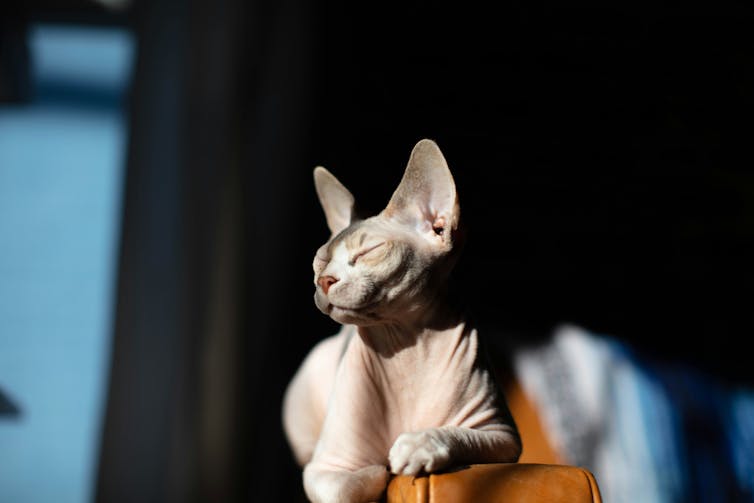Allergies can be debilitating for those who have them - even more so when the cause of the allergic reaction is a beloved pet.
Author
- Jazmine Skinner
Lecturer in Animal Science, University of Southern Queensland
Second only to dust mites , the humble domestic house cat is one of the major causes of indoor allergens for people.
But what is the actual source of the allergic response ? And are certain breeds less allergenic than others? There are many myths and misconceptions related to cat allergens, so let's debunk a few.
It's not the hair!
Contrary to common misconception, cat hair is not the cause of allergies in people.
Rather, the allergy is down to a pesky protein commonly referred to as Fel d 1 . This protein is produced in a cat's saliva and skin glands. While cats produce at least eight allergens, it is Fel d 1 which studies have shown to be the leading cat allergen.
Fel d 1 is a microscopic protein that readily sticks to clothing and other surfaces. It can also remain airborne for long periods of time, making it easy to inhale.
Studies have shown it can even be found in homes without cats, brought in from outside on clothes and other objects - not great news for people with a severe allergy.
The Fel d 1 allergen is transferred to the cat's hair and skin when they groom themselves. It then spreads into their environment when they shed hair and dander , which is mostly comprised of dead skin cells.
Although the cat's hair can carry the allergens, the hair itself is not at fault here. Even hairless Sphynx cats secrete the protein. This is also why longer haired, fluffier cats don't necessarily make you more allergic.

It's not the breed, either
In fact, research has shown that neither the length of the cat's hair , nor the colour of its coat, appear to have any significant bearing on how much allergen the cat produces.
Regardless of a cat's breed, sex and individual variation in the production of Fel d 1 are the main reason why some cats seem to cause a greater allergic response than others.
It has long been known that on average, unneutered male cats produce more Fel d 1 than females or neutered males . Some studies have also found that older cats tend to produce lower levels of Fel d 1 than younger cats.
While there are breeds referred to as " hypoallergenic ", it is important to remember this does not mean "allergen-free". According to a review published in 2024 , "to date, there is no scientific evidence for a hypoallergenic cat breed".
However, putting our strict hypoallergenic definition aside, a few small studies have reported reduced levels of Fel d 1 production in some of these breeds . It is important to remember though that even in individual cats, production of Fel d 1 can vary widely throughout the year .
Further studies in these breeds, using larger sample sizes, is needed to confirm these findings.
Overall, the fact that sensitive people report an increased allergic response to some cats rather than others is likely due to variation in how much Fel d 1 the individual cat produces.

Can we make cats less allergenic?
In the last few years, several studies have investigated the possibility of vaccinating cats against the Fel d 1 protein .
While this would be great news for allergy sufferers, the issue is that researchers are currently unsure what role the protein plays in cats. Current evidence suggests it may play a role in the dispersal of pheromones, and potentially in protecting the cat's skin; further research is needed.
There is also some initial evidence to suggest that therapeutic diets in which an antibody is added from chicken eggs (IgY antibodies) can reduce the production of Fel d 1 that a cat produces. However, larger studies are needed before we might start seeing "anti-allergy" cat food on the shelves.
There is some evidence to suggest that exposure to cats at a young age may reduce the likelihood of a person developing an allergy.
If you're an adult allergic to cats but still would like to have one, there is good evidence to suggest regular cleaning can substantially decrease the amount of cat allergens in your home.
Even though the jury is out on the scientific evidence for "hypoallergenic" cat breeds, some cats really are less allergenic than others.
Despite the challenges for those that are allergic, you are not doomed to have to avoid cats for the rest of your life. With the right management and care, cat ownership is entirely possible - and absolutely worth it.
![]()
Jazmine Skinner does not work for, consult, own shares in or receive funding from any company or organisation that would benefit from this article, and has disclosed no relevant affiliations beyond their academic appointment.






